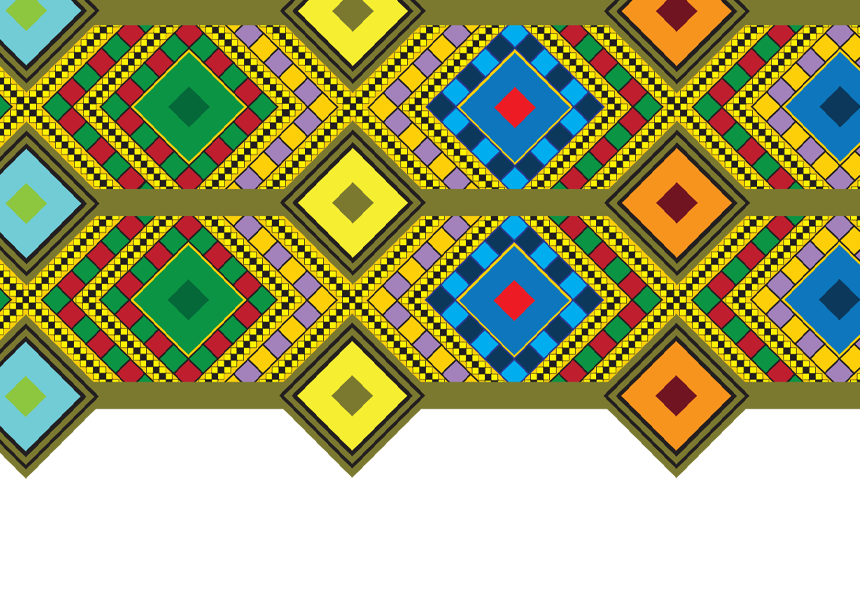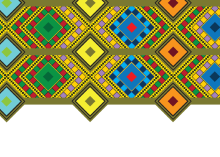The tilet is a quintessential feature of Ethiopian traditional attire, deeply rooted in our religious, ethnic and identity symbolism. Crafting the tilet involves intricate weaving techniques, utilizing continuous extra weft threads of varying colours to achieve specific desired designs. This intricate process requires a diverse range of colours, thread types and patterns, demanding significant time and effort to create the embroidery for each cloth.
A revered traditional art form found throughout Ethiopia, the handcrafted nature of tilet weaving reflects the rich cultural heritage across the country. Each design is instilled with meaning, with variations in colour, pattern, and material providing insights into its origin or regional significance.
What captivates me most is the intricate process and diverse materials used in creating the stunning border embroidery of the tilet. From handmade to factory-produced materials, the range of materials reflects the complex nature of Ethiopian society.
I strongly believe that this serves as a poignant reflection of our society’s coexistence, despite differences in background, language, environment, economy and culture, all united under the shared identity of Ethiopia. While some may disagree, I believe this unity was once a hallmark of our country, even if it may not be as prominent today.
As members of the body of Christ, from diverse backgrounds and perspectives, we are also intricately woven together to form a unique and meaningful tapestry, aimed at expanding the kingdom of God. Our collective embroidery is not simply a plain design; rather, it is a complex pattern crafted from diverse colours, materials and experiences. It symbolizes our ongoing journey of growth and transformation into the likeness of Christ. The way we are woven is our powerful message to the world, illustrating who we are and how we represent the kingdom of God.
However, when conflicts arise and we struggle to accept one another, our embroidery loses its significance. It becomes plain—a disjointed array without colour, beauty or meaning. As such it evokes feelings of mourning rather than celebration.
As the church in Ethiopia, we recognize the need to work on fostering acceptance and presenting ourselves to each other with simplicity and vulnerability, in order to weave a beautiful tapestry imbued with the deeper meanings of love, integrity and the sacrificial life exemplified by the cross.
As a nation and church, we lag behind in our efforts to embrace each other and foster unity and acceptance. It often feels like we’re taking one step forward and two steps back, particularly concerning our ability to hold onto one another. The pervasive us-versus-them mentality is deeply ingrained, with ethnic, class and theological divisions becoming worse. This internal fragmentation of our churches mirrors the broader challenges facing our country.
I lament for my church! I lament for my country! I lament for unity!
We must continually strive to foster hope, re-hope and envision a future in which our diverse backgrounds, minor theological variances and evolving social dynamics are woven together into a magnificent tapestry. In this unified tilet every individual is valued and acknowledged, without any single entity overshadowing or dominating the rest.
Instead, each of us contributes our strengths and uniqueness to create something truly extraordinary. If such a tapestry can exist in the form of a tilet, then it is my unwavering hope, and re-hope, for both my church and country to embody this beautifully woven unity.
Tigist Tesfaye Gelagle lives in Addis Ababa, Ethiopia, and serves as secretary of the Mennonite World Conference Deacons Commission. She is also the founder and director of The Spark Valley, an educational NGO.





Add new comment
Canadian Mennonite invites comments and encourages constructive discussion about our content. Actual full names (first and last) are required. Comments are moderated and may be edited. They will not appear online until approved and will be posted during business hours. Some comments may be reproduced in print.